Bluetooth temp and humidity data recorder can store up to 32000 pieces of the data when the long range mode is enabled. Mobile phone with Bluetooth can download and install App. It can store and monitor temperature and humidity of the environment comprehensively. Its characteristics are small sized, portable and highly accurate for wide use in cold chain logistics, archives, labs, museums, etc.
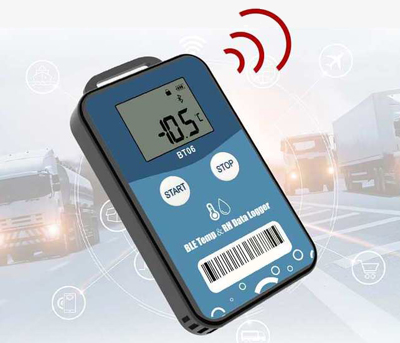
Temperature and humidity data logger with Bluetooth
- Built-in Bluetooth 5.0 connector. Easy view data via Bluetooth connection.
- APP setup generates PDF reports. History report can be sent to specified email.
- Intuitive LCD indication. LCD presents all key information including checking current temperature, humidity, battery power and Bluetooth status.
- Remote transmission. Enable long range mode, the transmission distance is up to 300 meters.
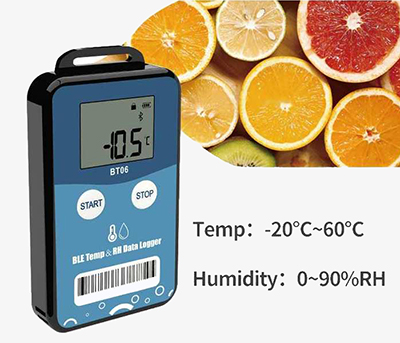
Bluetooth temp & RH data logger built-in sensor
- Built-in highly sensitive temperature and humidity sensor.
- Super long standby 1 year, replaceable battery.
- 32,000 temperature recordings can be stored into device flash memory.
- Configurable alarm thresholds, uploading interval and temp & RH unit.
How to use the software on Android/IOS?
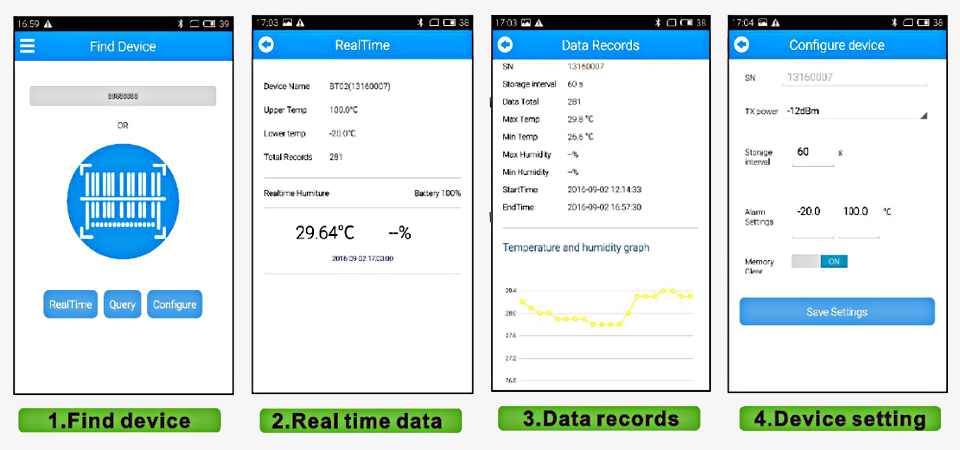
- Find device. Scan the barcode on device with this software.
- Read time data. Check the real time temperature data on phones, you can see device name/temperature value/battery level.
- Data records. Check the historical records with a graphic information.
- Device setting. Set the device as you like on TX power/storage interval/alarm setting/memory clean.
Applications
Bluetooth temperature and humidity data logger is mainly used for temperature mapping during storage, shipping and transportation of vaccines, food, medicine, chemicals and other products.
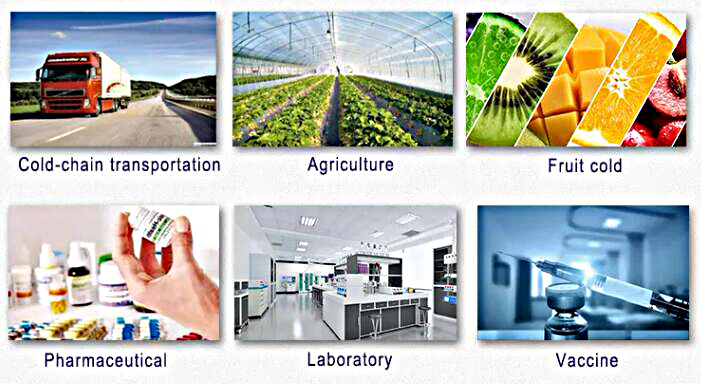
| Model | SISCO-TDL-BT06 |
| Battery Shelf Life | 1 Year (Default) |
| Weight | 40g |
| Dimension | 86mm*48mm*12mm |
| Protocol Standard | Bluetooth 5.0 |
| Detecting Temperature Range | -20℃~+60℃ |
| Temperature Accuracy | ±0.3℃ (-20~40℃), ±0.5℃ (Other) |
| Temperature Resolution | 0.1℃ |
| Data Storage Capacity | 32,000 |
| Start Mode | Push-to-Start or Timing Start |
| Logging Interval | Default 10 Minutes, User Adjustable (10s~18 Hours) |
| Alarm Range | Temperature Alarm: 2°C~8°C (factory default, adjustable) Humidity Alarm: 40%-60% RH (factory default, adjustable) |
| Transmission Distance | 300 Meters |
| Output Power | 4dBm, Adjustable |
| Protection Grade | IP65 |
Dimension
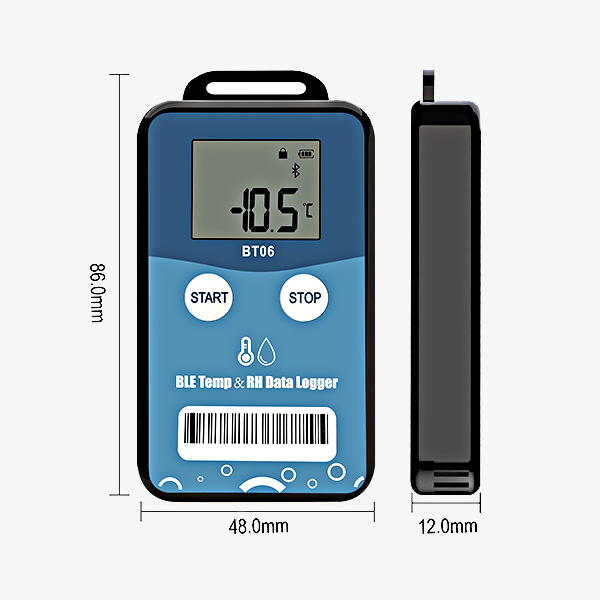
Q1: What is a temperature data logger?
A1: A temperature data logger is one of the types of temperature measuring instruments. With the popularization and wide application of computers, temperature data recorders have been produced. And because of its more accurate data recording, more convenient data storage, and more convenient data analysis functions, it has been widely used. Paperless temp data logger with USB interface also greatly facilitates the downloading and saving of data.
Q2: What are the functions of temperature data loggers?
A2: Measurement: Built-in temperature sensor or connectable external temperature sensor to measure temperature.
Record Storage: Automatically record and store measured temperature values.
Data transfer: transfer or download the saved measurement data to the computer through the USB interface.
Programming: such as setting sampling rate, data transmission method and interval, selecting temperature sensor type, alarm setting, etc.
Analysis: Perform the necessary analysis on the temperature data through the built-in software.
Q3: What are the advantages of temperature data loggers?
A3: The portable temperature and humidity data logger can regularly collect and record temperature and humidity parameters according to the configured time interval, and can transmit the collected and recorded data to the computer for processing and drawing charts. It is widely used in environmental protection, health and epidemic prevention, warehousing and transportation, museums, greenhouses and other fields. This recorder is powered by high precision sensors and high-energy lithium batteries. It is designed with low-power technology and requires no external power supply. It is small in size, low in power consumption, and high in precision. It can work continuously for more than three years.
Tips: How to use the temperature and humidity data logger?
The temperature and humidity data logger is mainly composed of a host and a temperature and humidity sensor. It is widely used in medical and pharmaceutical, food processing, agricultural research, biochemical laboratories, meteorological detection, electronic manufacturing, HVAC, file management, archaeological research, cold chain transportation, etc. field. Provide users with complete solutions for real-time environmental monitoring, wireless transmission, alarm and data recording. So how to use the temperature and humidity data logger?
- Correctly place the temperature and humidity data logger.
- Connect the sensor to the recorder correctly.
- The temperature and humidity recorder is powered by a built-in power supply. After connecting, it will self-check.
- Set the temperature and humidity sensor type on the recorder according to the specification and type of the temperature and humidity sensor.
- Set the relevant parameters, and then the recording will automatically measure the temperature and humidity.
Thank you for buying industrial test and measurement equipment on SISCO.com, all products sold by SISCO and the partner cover a 12 months warranty, effective from the date of receiving the products.
What is covered?
SISCO is responsible for providing free spare parts, and free technical support to assist the customer to repair the defective products until the problem is solved.
What is not covered?
- Product purchased from anyone other than a SISCO store or a SISCO authorized reseller.
- Expendable parts.
- Routine cleaning or normal cosmetic and mechanical wear.
- Damage from misuse, abuse or neglect.
- Damage from use of parts other than SISCO approved.
- Damage from use outside the product’s usage or storage parameters.
- Damage from use of parts not sold by SISCO.
- Damage from modification or incorporation into other products.
- Damage from repair or replacement of warranted parts by a service provider other than a SISCO authorized service provider.
- Damage caused by the application environment not meeting the product usage requirements and the failure to perform preventive maintenance.

